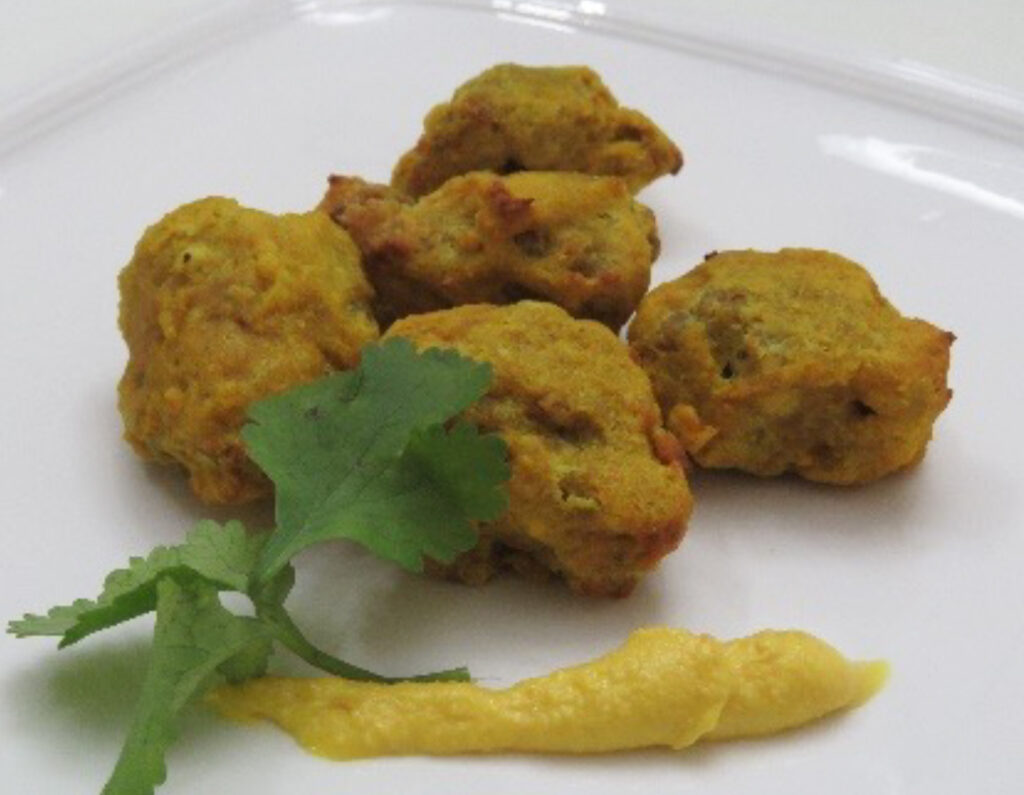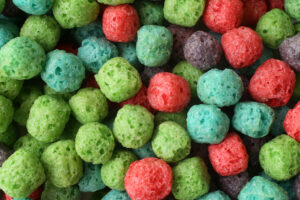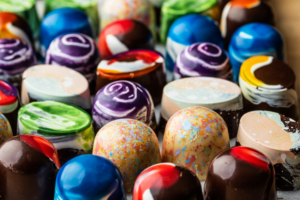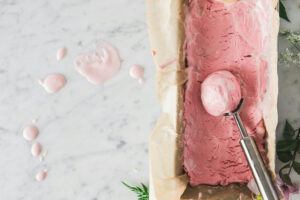With the rise of meat alternatives, it was predicted that the next big trend in the plant-based movement would be a rise of the waters: seafood alternative products. And while the craving for meat imitation products remains strong among flexitarian consumers, there has been a recent uptick in the design of fish, crustacean, and shellfish imitations as predicted.
Whether it’s for vegan and vegetarian consumers that are nostalgic for seafood, people suffering from seafood allergies, or people that have abstained for religious (since crustaceans and mollusks are not Kosher) or ethical/ecological reasons – there are now options that suit the needs of these populations. We’ll show you how to use natural colours for seafood alternatives to provide the most authentic experience possible for your consumers.
Reinventing Nature: Color Design Challenges
Meeting the expectations of such a wide range of consumers is a major quest for food designers – the uniqueness of the texture of seafood demands a slightly different approach to what is being used in meat and poultry alternatives, often relying heavily on hydrocolloids and starches to get the combination of elastic, chewy and gummy texture of many seafood dishes. That fact gives us a first hint of what type of natural colors can be used.
While a high content of protein can help to emulsify oil-based colors (which is the case of soy-based hamburgers and cased meats), these types of colors are harder to incorporate in gel-like bases made from hydrocolloids. Water soluble and water dispersible colors are therefore the better choice when coloring these applications.
The shape and appearance of the seafood pieces is also important when considering the coloration technology as seafood is not always uniformly coloured. The location of colours follows the muscle and fat pattern distribution, therefore marbled, striped, or localized colour patches are very common. This can require a creative approach on the colour application, such as stamping the surface of the pieces, relying on molds, or using progressive setting times for different colour layers, combining coloured and uncolored bases (as seen in the image below), or infusing colours trough a marinade while carefully controlling the rate of diffusion.
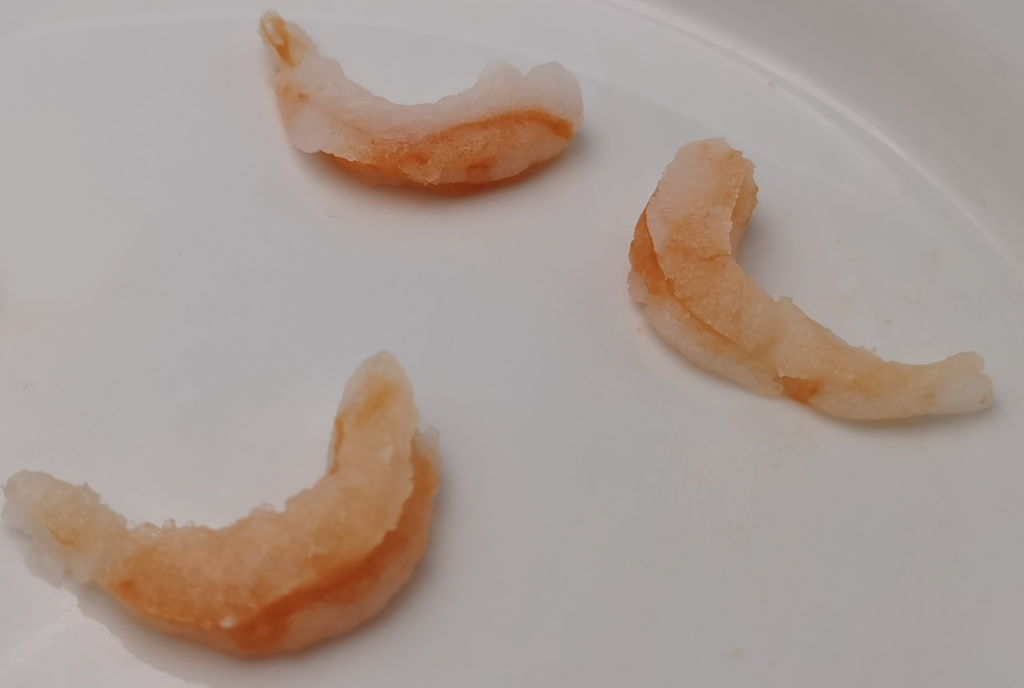
There are, of course other seafood analogs with high protein content that will easily emulsify oil soluble colours. Salmon-like burgers made with texturized soy protein can be coloured both with paprika oleoresins, or with paprika emulsions, with very similar results. Other colours can be mixed in for a customized look.
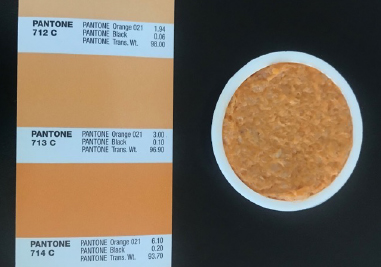
In plant based Kanikama, spectacular orange shades are possible by incorporating paprika oleoresin to the colored outer layer. The oil soluble nature will avoid virtually any colour bleeding to the white portion, both during industrial cooking and shelf life storage
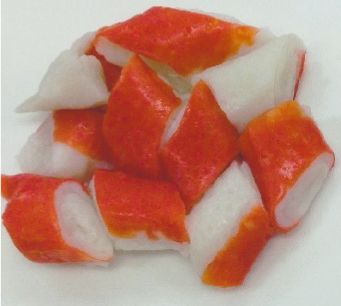
Selecting the right Shade
The colours we see in marine foods are often due to carotenoids that the animals obtain directly or indirectly from phytoplankton or from macroalgae. To achieve, these same hues in plant-based sea food products, you can use natural carotenoids, like paprika and annatto. However, the native natural carotenoids in fish and crustaceans often form complexes with proteins or clustered in physical structures like crystals, which modifies their hue.
For example, the meat of raw tuna is quite red as opposed to orange, so alternative versions of sashimi pieces, or seared and roasted tuna, would need a natural red colour, like beet. But since this colour is not the most heat stable, its use would determined by the extent of the industrial heat processing it will need to withstand during production. Red iron oxide, on the other hand, is a much more heat stable option and is a useful coloring tool where permitted (like Europe and Codex based regulations).
On the other hand, sashimi pieces or “raw cuts” like what one would use in sushi rolls or in nigiri, manufactured through cold processes or short or less intense heating processes, can benefit from vibrant plant-based colours like beet root red and anthocyanin blends.
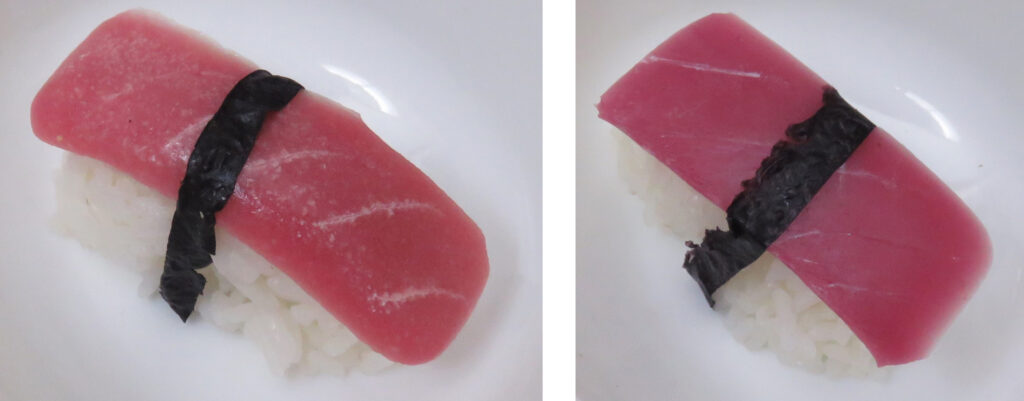
Imitations of salmon, abalone, or shrimp have a more typical orange appearance and can be coloured with paprika emulsions, which can provide a ranges of oranges – from the light orange seen below to a dark red orange – depending on the base colour and the dosage rate. You can see in the image below, that the orange hue of salmon can be easily imitated.
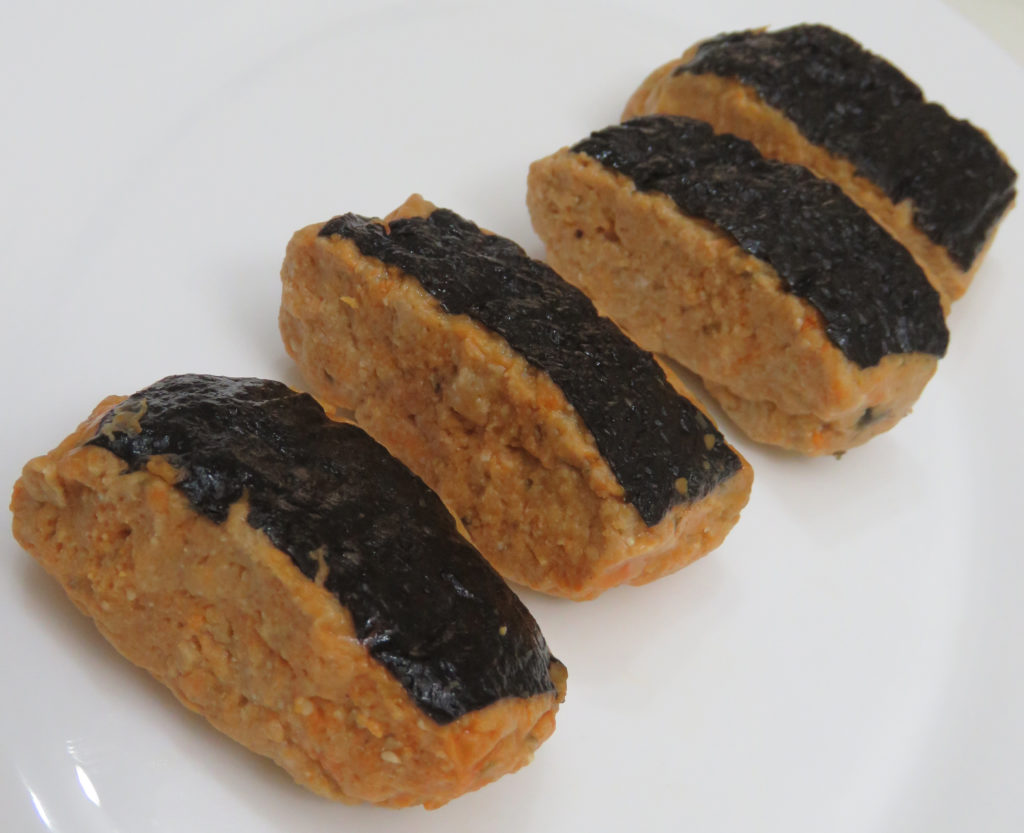
White fish and mollusk alternatives such as squids, are normally coloured with white pigments like titanium dioxide. However, since the use of this color is currently being questioned in several markets, shifting to alternative white pigments like calcium carbonate, or the use of opacifying agents based on emulsions or starches, can be a less risky option. To get the best white without the use of titanium dioxide, it’s best to start with naturally white bases like konjac, tofu and mushrooms that can be used to obtain the milky opacity of the real seafood. To achieve the best shade for your seafood alternatives, a blend may be the best route for your application.
Modernist cuisine techniques like spherification with alginate or with Agar-Agar, are great options for creative products like plant based caviar and roe. Water soluble and water dispersible colours and their blends will bring to life realistic imitations of known varieties like masago, ikura or tobiko, or alternatively imaginative shades can be utilized to combine with unexpected flavours like ginger, wasabi, or yuzu, as seen in the image below.
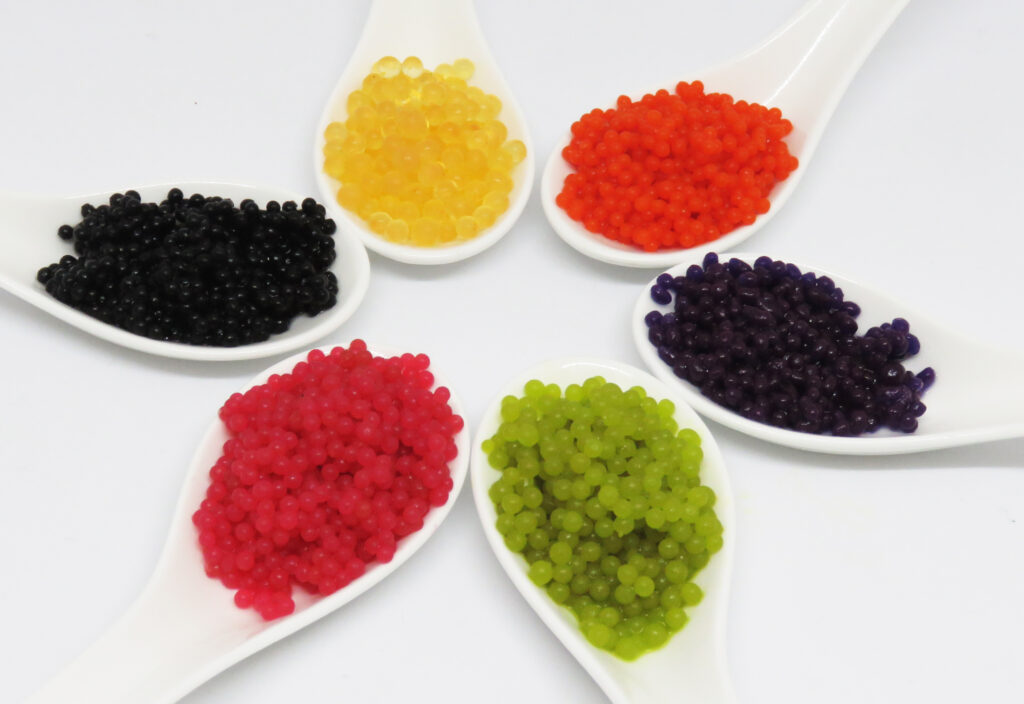
Lastly, we want to mention a creative way to design seafood alternatives that bypass some of the hurdles relative to shape, texture, and even realistic colour. Breading has always been a preferred preparation for all sorts of seafood: Shrimps, calamari, fish fingers, scallops, breaded fillets…virtually all seafood can be enjoyed with a crispy batter crust that can be fried or baked. Adding heat resistant natural colours, flavours and herbal ingredients or dehydrated vegetables to the breading batter is a fun and attractive way to differentiate seafood alternatives for all sorts of consumers.
Ready to get started? Request a sample or contact us to get started using natural colours for seafood alternatives in your next project.
